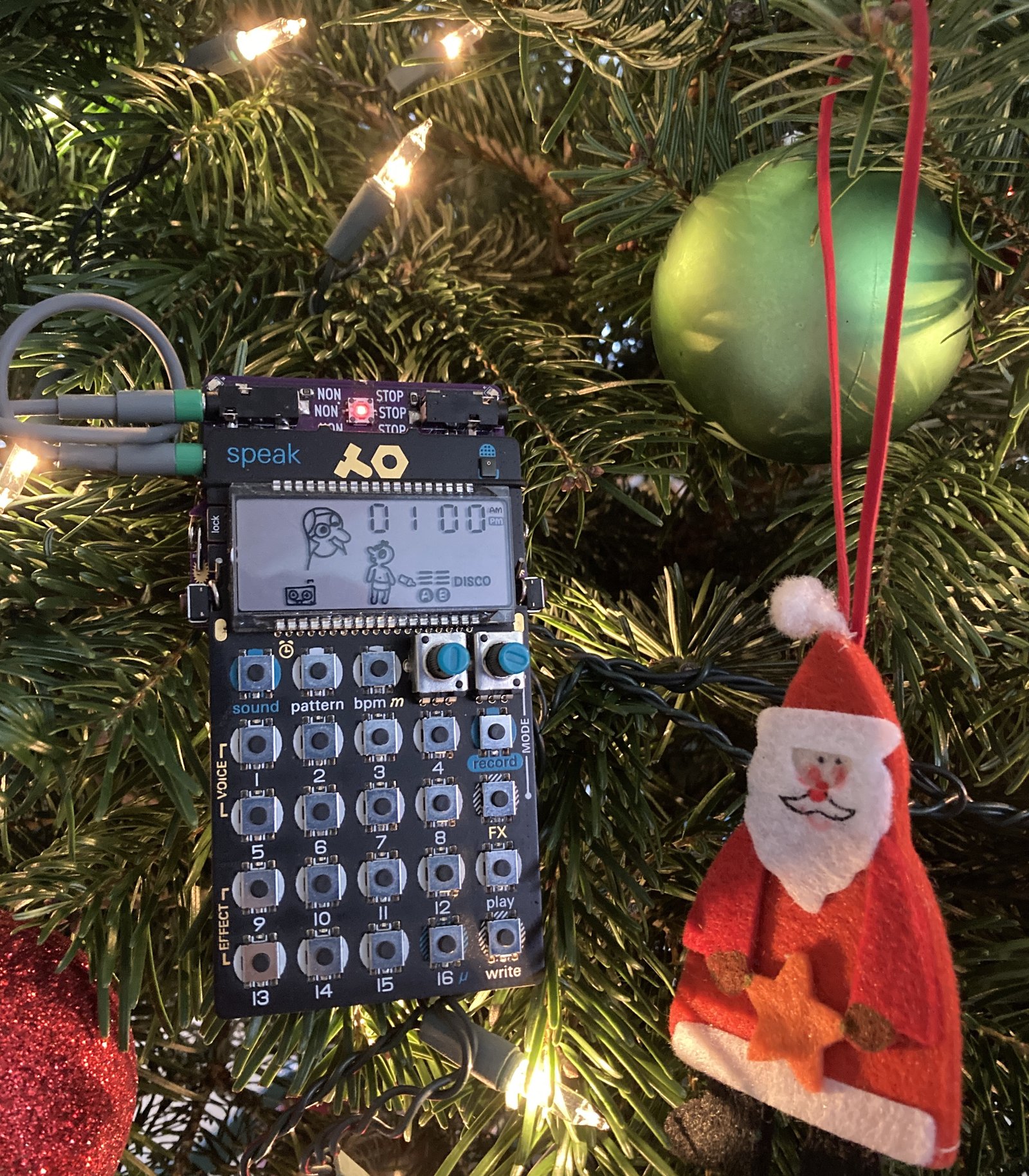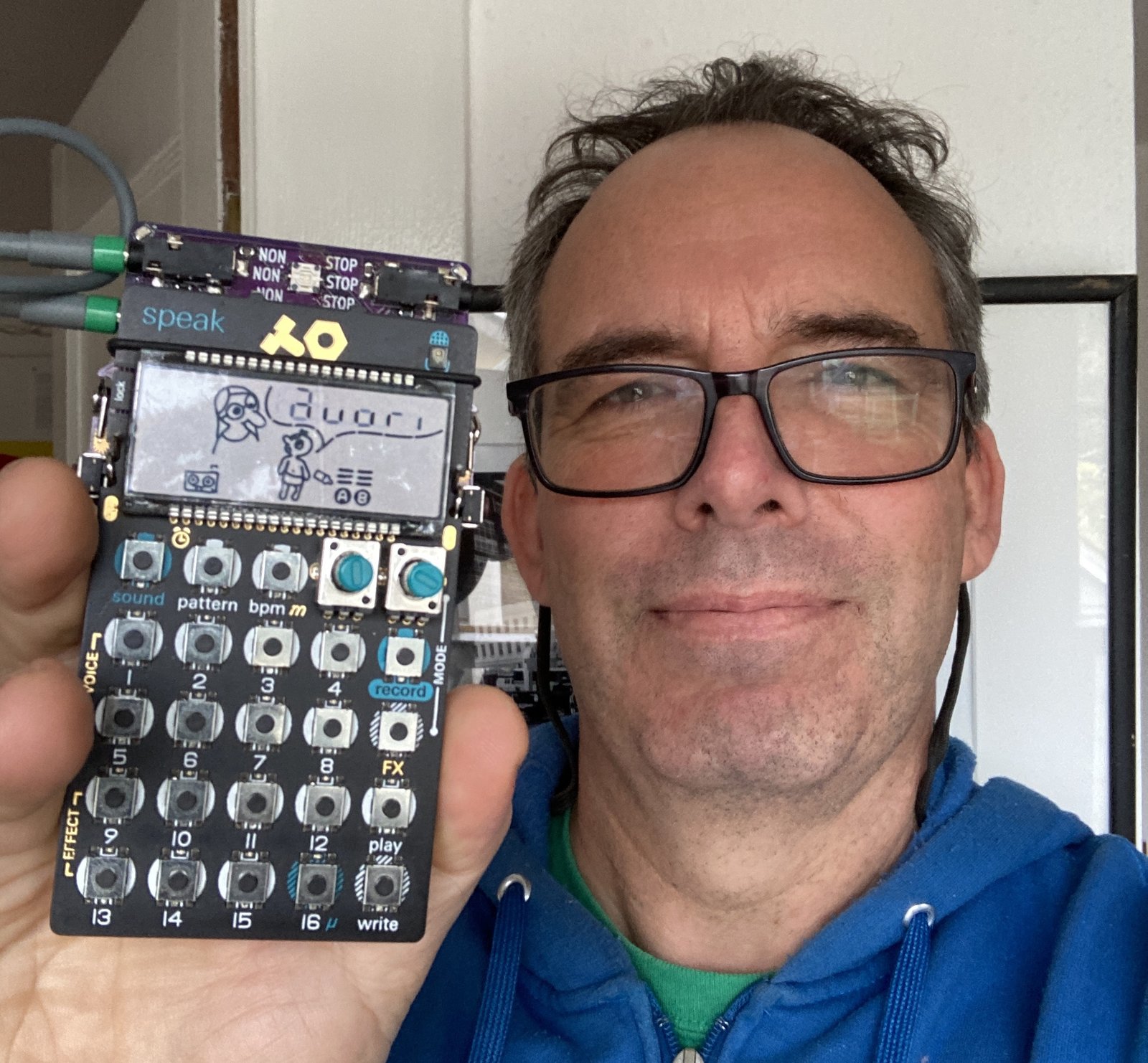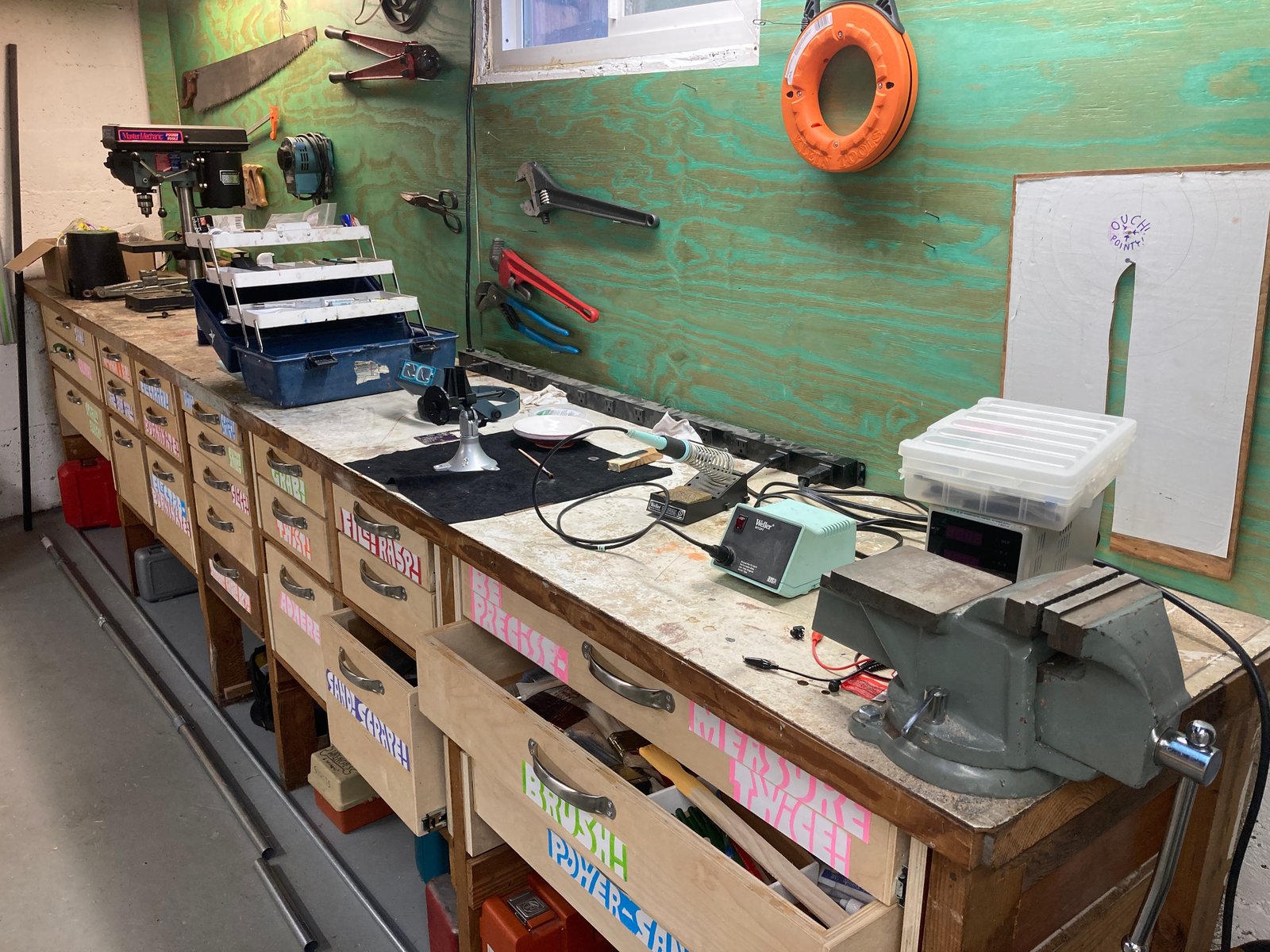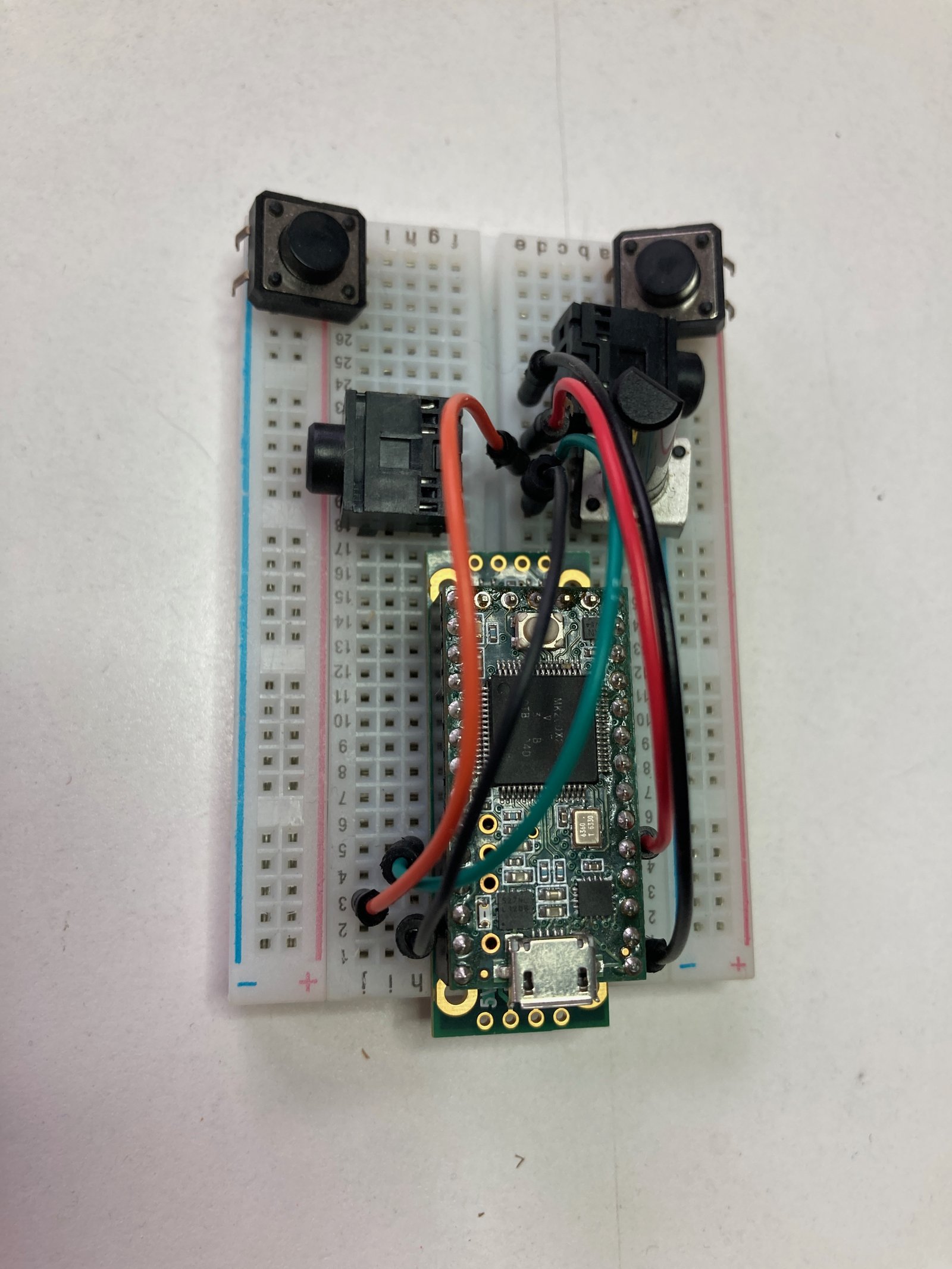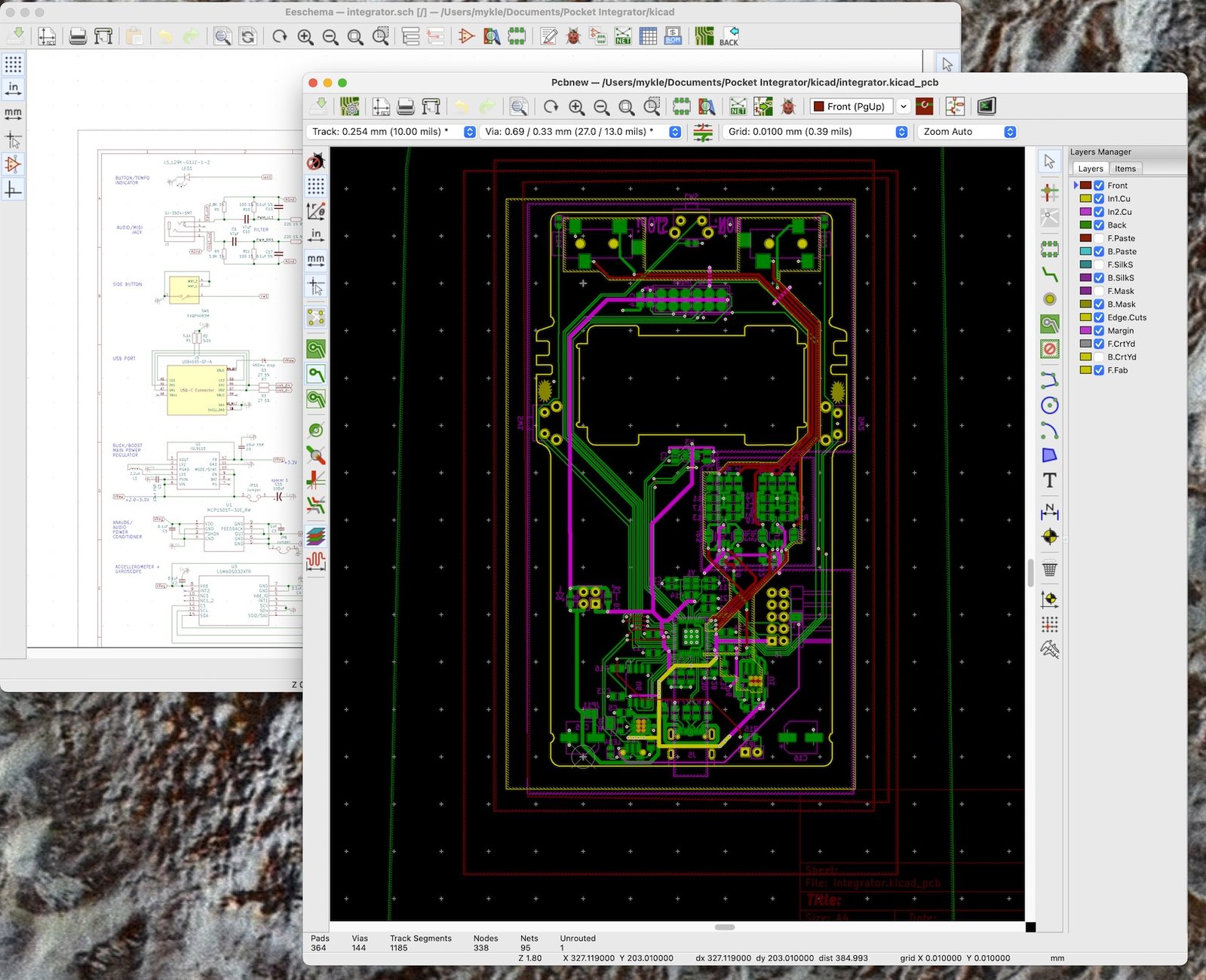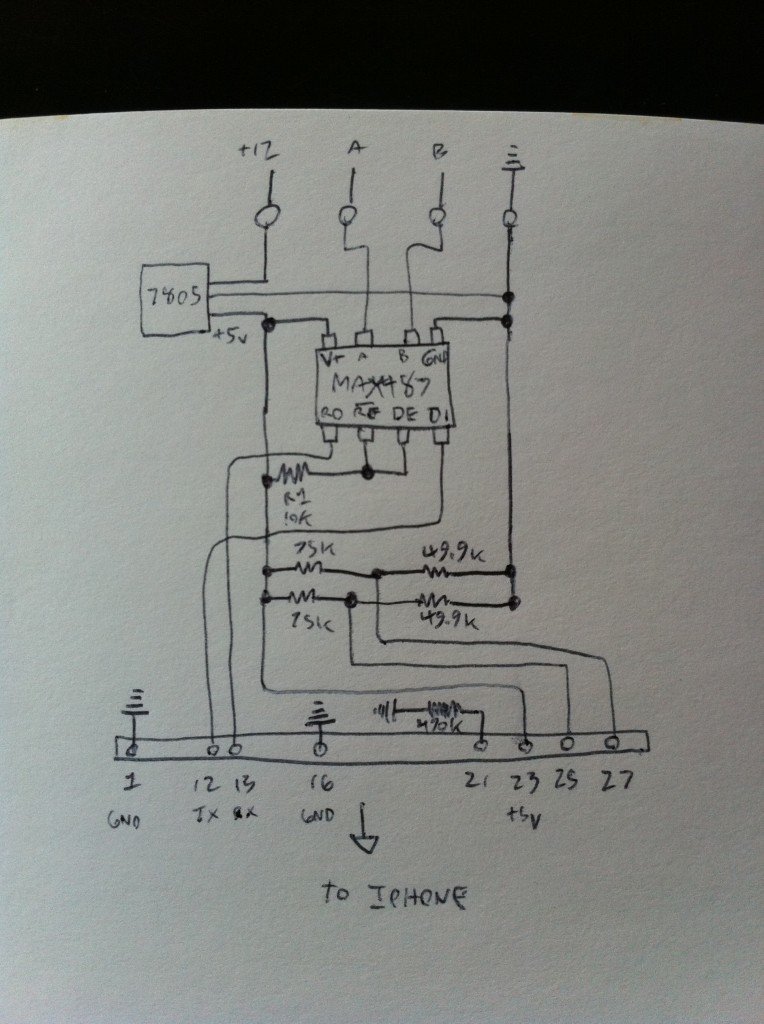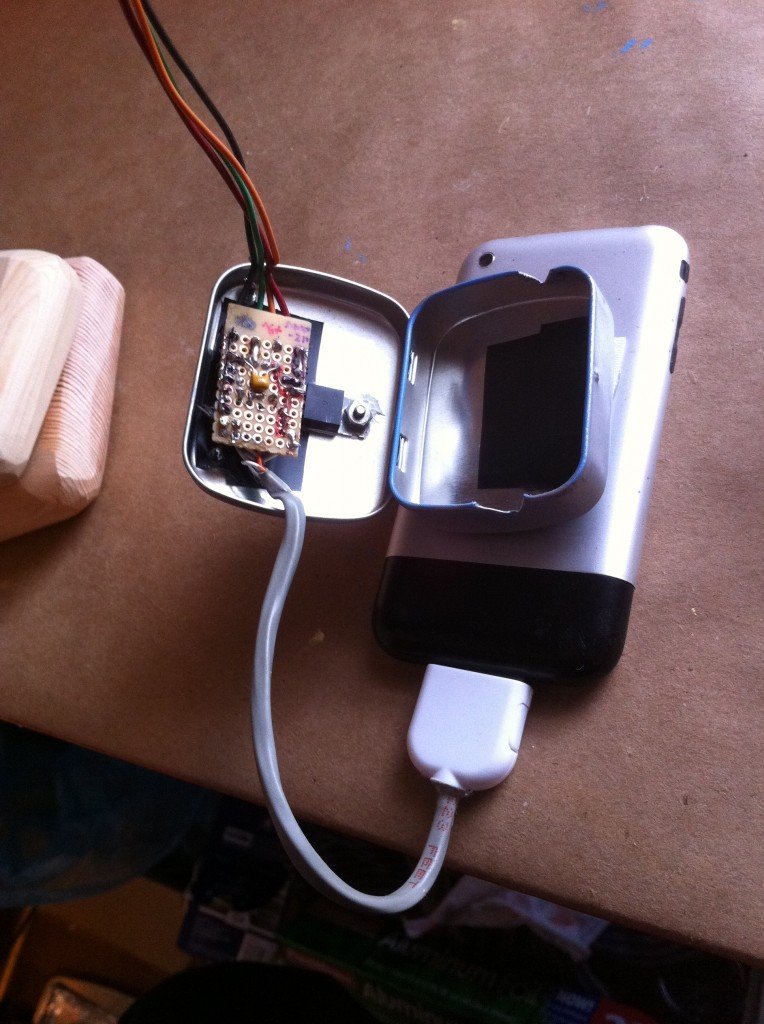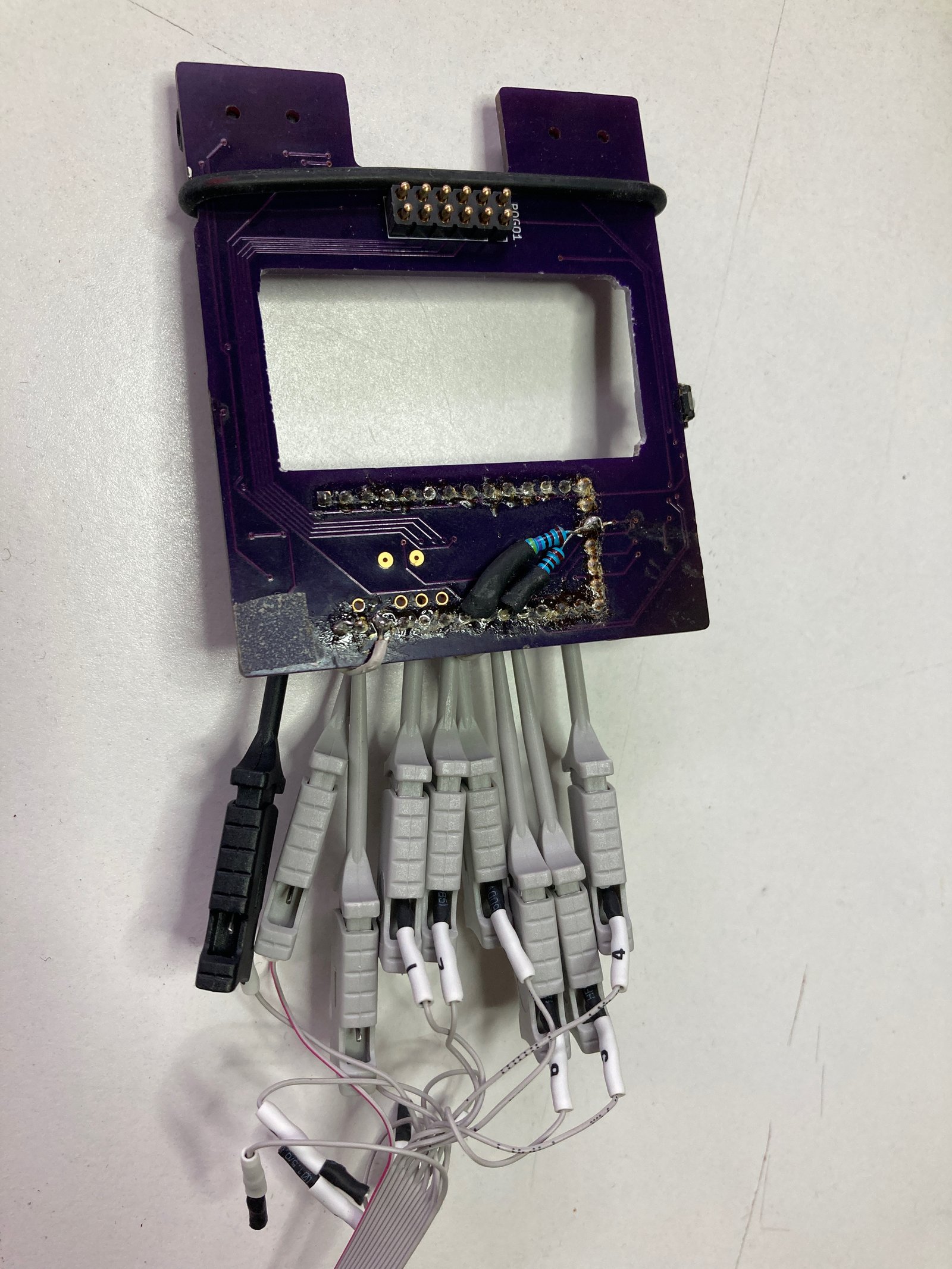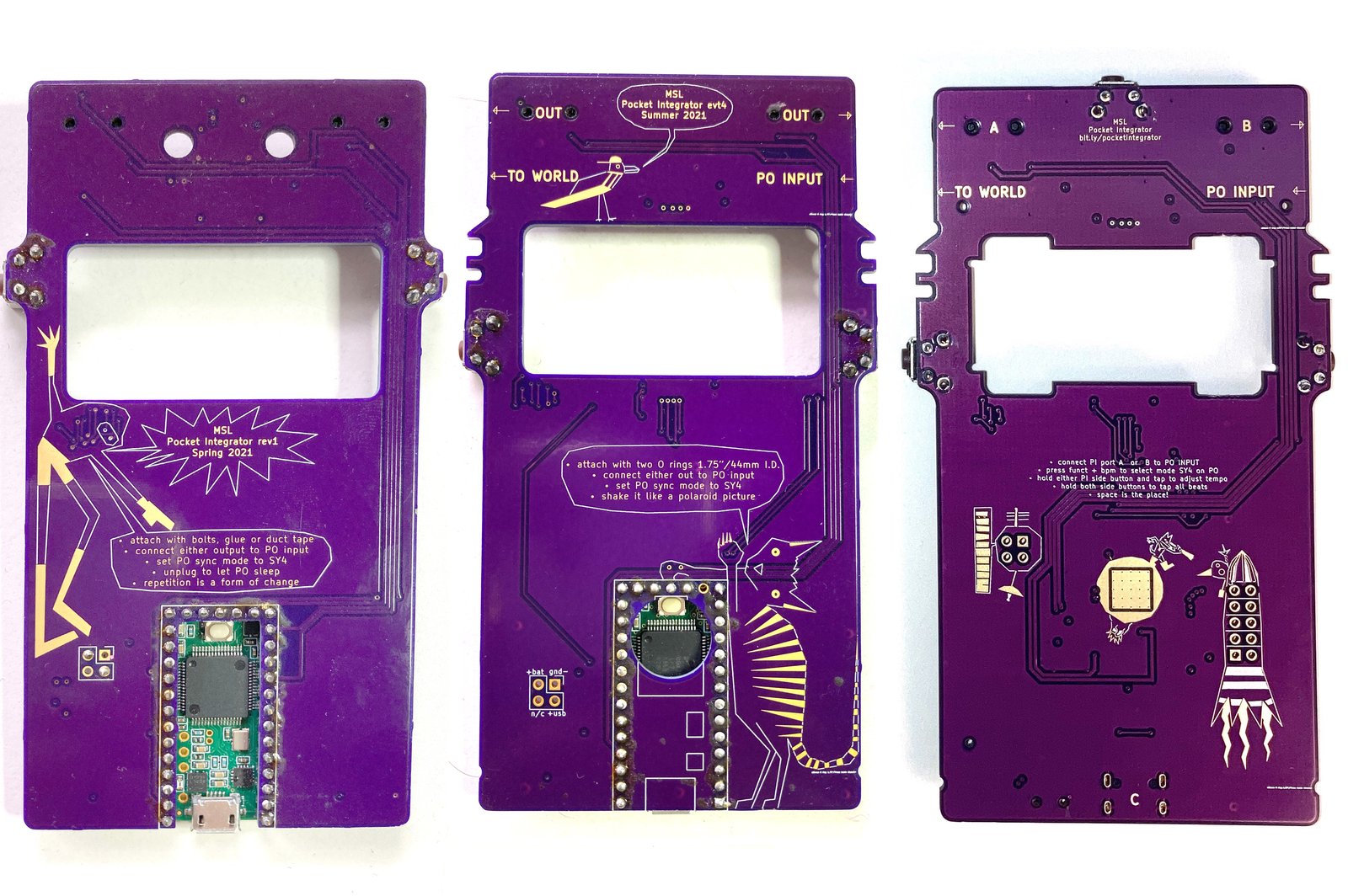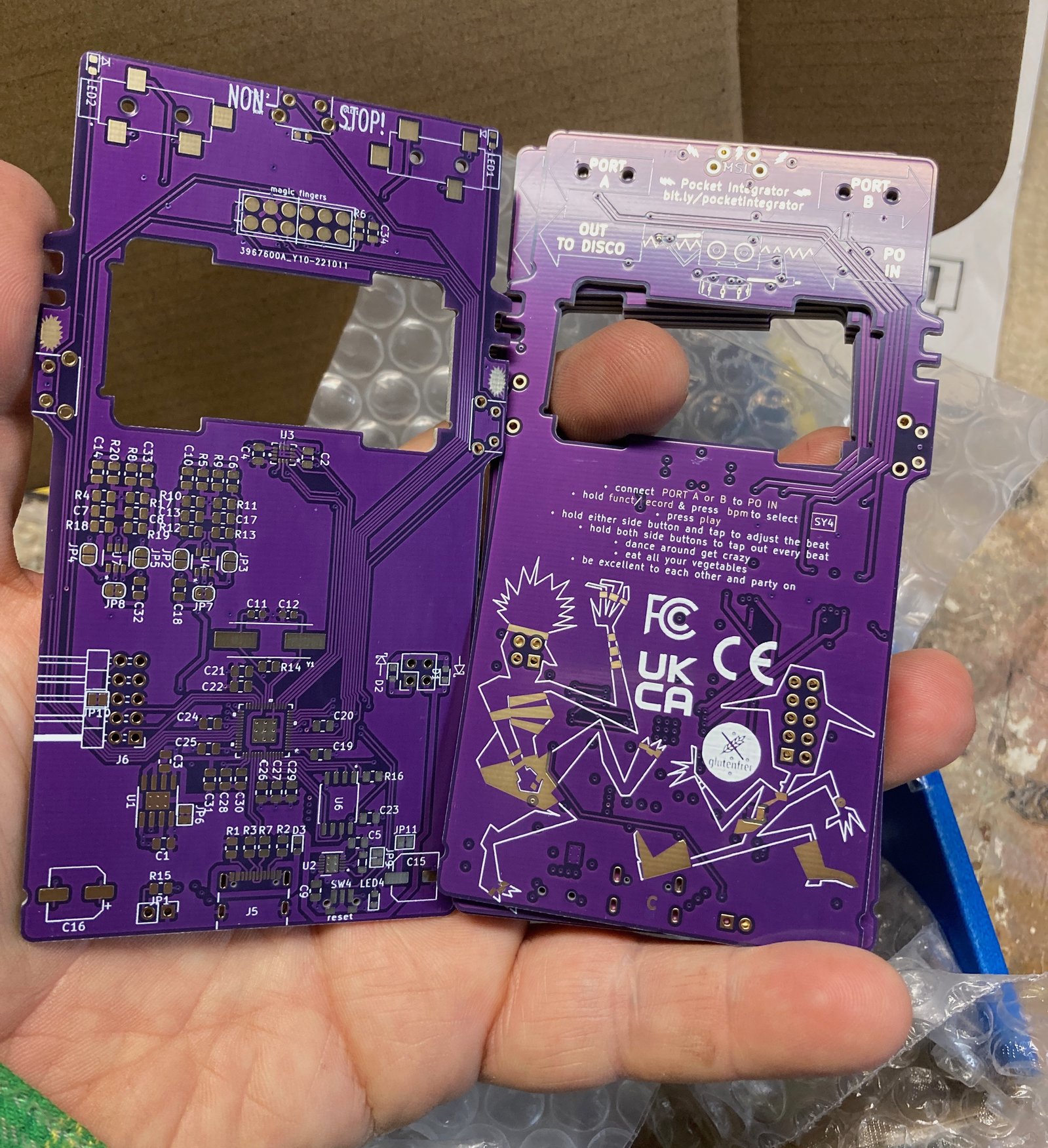Project update 6 of 11
Latest Campaign News and PI's Design Process
by Mykle HHappy Holidays! I hope you’re enjoying the cozy, indoor blinking lights season as much as I am.
Our crowdfunding campaign for Pocket Integrator, the feature-packed live jamming accessory for Pocket Operators, continues until December 22nd. We’ve adjusted our campaign goals a bit and extended the calendar to compensate for a week I lost to Omicron >cough cough<. Even so, we need quite a few more backers if we’re going to make it. Our current social media reach has gotten us a lot of excellent feedback and found a lot of supporters; a big thank you to all our backers and supporters who’ve been sharing our links and talking up the campaign! But, I still don’t think we’re on the radar of the majority of Pocket Operator owners, so I gratefully accept any and all suggestions for other groups, sites, blogs, or other channels where they may be hanging out. Thanks!
There’re a couple of new videos up in the Pocket Integrator YouTube channel. One is a couple fun moments from a Pocket Integrator jam with my friend Tomas de Alameda — talented drummer for great Portland bands such as CHERVONA, NUUR, and THREE FOR SILVER — along with our mutual pal Gordon. In this video we goof around on instruments, talk about the difference between human drumming and clock drumming, and I give Tomas a brief lesson in Pocket Integrating.
I also made a quick demo video to show off the USB power feature. Yes, Pocket Integrator can power your PO over USB, no batteries required. That’s not all it can do, but it’s a pretty handy feature.
Meanwhile: I suppose I want the Pocket Integrator to dazzle you on its own merits, but some people have asked me to talk about my design process and what I’m up to more generally. If that sounds boring, feel free to skip to the last paragraph.
Oh hi, you’re still here! I’m Mykle Hansen and I make stuff. My day job career has been in software engineering and systems administration, but I’ve always had my fingers in music, sound, language, signals, information, interaction… the areas where Computer Science and electronics and beauty and experience intersect. My tastes are eclectic and all over the place. I’m always asking myself how I can integrate all the things I love into one life.
I studied Computer Science in college, but in Electronic Engineering I am self-taught. I like to learn by doing and by asking lots and lots of questions! That approach has taken me from repairing vintage tube amps, to building Frankenstein-y musical instruments, to designing simple light and sound toys like the Speed Vest, to experiments with audio-processing technologies like Faust, and on and on. I’m very lucky I have a good home workshop to build things in, a supportive wife, and a wise local community of experienced EEs who appreciate my weird projects.
Pocket Integrator started with a personal need: I just wanted to jam live with my PO-12! To play it along with other musicians, or the radio, or whatever other music I was listening to. I never found anything in a music store that could do this in what I thought was a natural way, even though what I wanted seemed very simple to me. It was so simple, in fact, that one night I mocked it up on a breadboard:
It’s a bit tricky to tap and shake a breadboard without knocking parts loose, but I wrote a simple firmware for it, and it worked! At that point I knew I had something that could work, but I couldn’t just glue this breadboard to the back of my Pocket Operator. The design of the PO is really inspiring to me because Teenage Engineering took the industrial process for making printed circuit boards — which are usually the ugly, messy guts of computers — and used it to create something that’s really well-designed, sleek and tactile and finished. I decided I wanted to put my invention on a companion board that would look good and feel good when nestled alongside the PO.
To do that, I was going to have to learn how to use modern PCB design tools:
Before 2020, my electronics design process was usually to sketch on a napkin:
Then, I would debug on a breadboard, transfer the breadboard circuit directly to a hunk of generic 0.1" perforated circuit board, and solder it up by hand. If I was feeling really fancy, I’d stuff that in an Altoids tin:
It wasn’t so long ago when this was a standard approach for a one-off circuit prototype, because custom PCBs were so hard to get! If you wanted one, you’d first hand-draw your circuit using a pen, stencils, and strips of tape on a transparent sheet of plastic. Then you’d have to photo-etch that onto a sheet of copper in a bath of nasty acid in your darkened bathroom. That could win you a reasonably accurate one-layer board, plus at least a pint of toxic waste. It took twice as much time and effort and chemical soup to make a two-layer board, and a four-layer board… you just hoped you’d never need one.
But these days everything is easier. There are a number of small-batch PCB houses that will do all the dirty work for you in their factories, turning your digital files into meticulously etched and drilled and slotted two, four, or six layer circuit boards, in sets of as few as three boards, and in one week or less, for really reasonable prices. Portland’s own OshPark was an innovator in this business, but today there are several other services competing on price and turnaround time. This is an amazing era for cottage-industry electronics, which has led to a Cambrian explosion of guitar pedals, Eurorack gear, and hacker accessories.
This prototype was also my first-ever custom PCB design. I made it in KiCad, an open-source electronics design suite. And I made a lot of mistakes! But it was amazing to be able to design this on my computer, upload it to OshPark, and get it mailed back to me as a solid, microscopically precise object in one week’s time. This prototype proved that my doodad could get power and information from the debugging pads on the back of a Pocket Operator. (I’m super-grateful to the anonymous author of Hacking The PO, a website that tears apart a PO and explains all of the signals on those pads, plus lots of other handy intelligence.)
Since then, each new prototype has been another lesson in the deep details of KiCad board design and electronics engineering in general, and another iteration on the design of the Pocket Integrator.
To build each new prototype, I first use a laser-cut stencil and the edge of an expired credit card to screen-print solder paste onto the PCBs. This part has to be done just perfectly, or else there can be hard-to-debug problems later. I used to be terrible at it, but now after way too much practice I can usually screen at least three out of five boards perfectly. Next, I use a DIY vacuum pickup tool to place all of the tiny components in their individual locations. The board is then transferred (very carefully!) to a temperature-controlled hotplate to melt and reflow the solder, and, once that cools down, I hand-solder the through-hole buttons and JTAG port. And then the testing begins!
This is Version 7.1, the latest, greatest Pocket Integrator prototype. Due to continuing flux in the parts world and a couple great suggestions I’ve gotten during the campaign, there will definitely be at least a few more tweaks, at least one more prototype, before we go to manufacturing. But all of the functionality is there, the fit is tight, and, to me at least, it looks and feels great. It’s a naked printed circuit board with nothing to hide, just like the Pocket Operator itself. I do hope to design a case for it at some point, but honestly I find this exposed look really beautiful.
As of today, I really don’t know if our campaign will fund or not. It will definitely need more momentum than it’s gotten so far, but a bit more media uptake could make all the difference. When you like and share the videos and the campaign page on social media, that all helps a lot! But even if this campaign doesn’t reach its goals, I’m not throwing in the towel. I’ve gotten such great feedback whenever I’ve demo’ed this device, and such a lot of support from all of you, and I really want to put Pocket Integrators in all of your hands! So, let’s keep our fingers crossed. Meanwhile, please do contact me with your suggestions, your questions, and your Christmas cookie recipes. You can use the "Ask A Technical Question" link below.
Cheers! -mykle-
